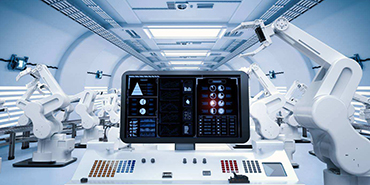

Homepage > Industrial news > The task of preventing and treating tuberculosis in China is arduous, and the market prospect of active screening for tuberculosis is huge.
Hits:6318 Createtime:2022-08-12 11:53:37
1. China has a large number of tuberculosis cases, and the government has a heavy task in prevention and treatment
China is a country with high burden of pulmonary tuberculosis. According to the WHO report, the new cases in 30 countries with high burden of tuberculosis account for 86% of all cases in the world. Among them, the cases of pulmonary tuberculosis in 8 countries account for two-thirds of the global total, of which India accounts for 27%, China for 9% and Indonesia for 8%.
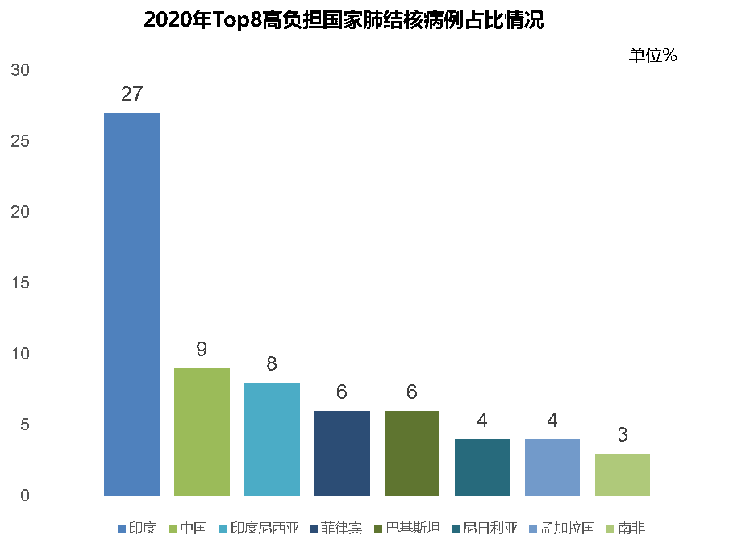
According to the report in the 2021 China Health Statistics Yearbook, there are 16 regions in China with more than 20000 TB cases, mainly in East China, Southwest China and South China, with 149200 in East China, 137800 in Southwest China and 107000 in South China.
The five provinces with the highest number of cases were Guangdong, Hunan, Sichuan, Henan and Guizhou.
The areas with a large number of drug-resistant tuberculosis are mainly Guizhou, Henan, Guangdong, Anhui, Guangxi and other places, because of the high number of patients and the high total drug resistance rate.
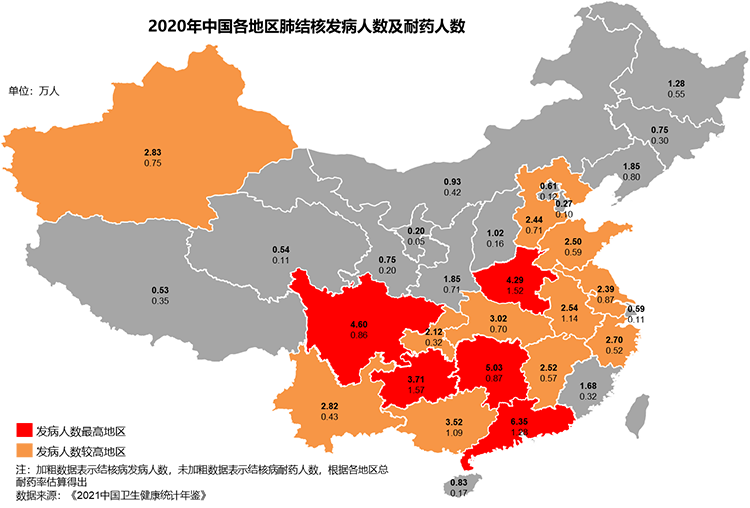
The distribution of special funds for tuberculosis in various provinces in China is generally preferred to provinces and cities with high incidence and incidence rate, which are implemented by the provincial centers for Disease Control and prevention and key municipal centers for Disease Control and prevention, mainly used for the prevention and management of drug-resistant tuberculosis and the follow-up management of patients. The tuberculosis prevention and control costs in various provinces and cities are as follows:

2. There are many kinds of drugs for the treatment of pulmonary tuberculosis, the development of new drugs is slow, and the drug resistance of patients is serious
At present, the conventional drugs used in the clinical treatment of pulmonary tuberculosis have been used for more than half a century. The commonly used anti tuberculosis drugs mainly include isoniazid, rifampicin, pyrazinamide, ethambutol and streptomycin. The first four drugs belong to oral drugs, and streptomycin belongs to injection. The first-line drugs of anti tuberculosis drugs are as follows:
With the abuse of various drugs and the long-term non-standard medication of patients, the phenomenon of drug-resistant tuberculosis becomes more and more serious.
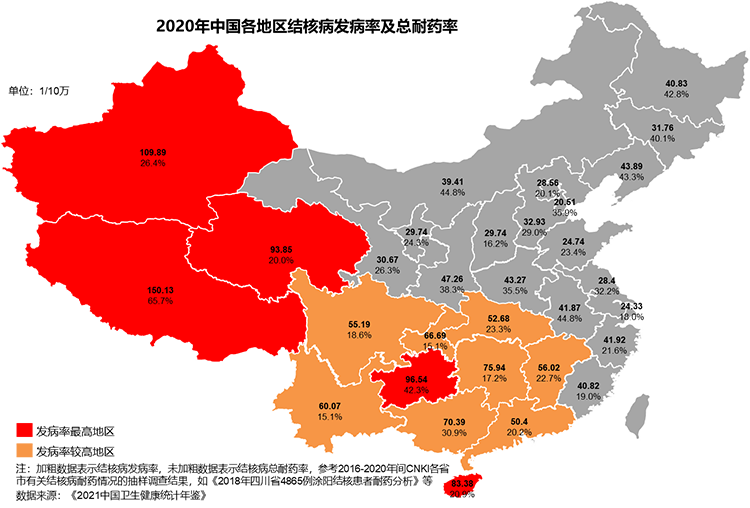
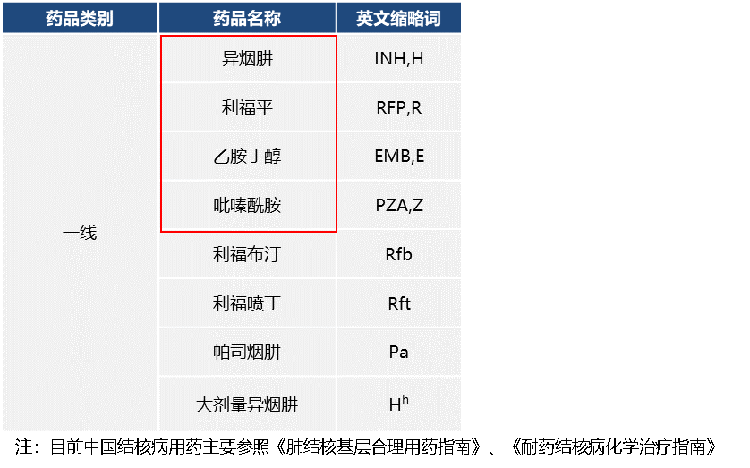
According to the report of China Health Statistics Yearbook 2021, the incidence rate of tuberculosis in China in 2020 is 47.76/100000, including:
(1) There are 13 regions in China where the incidence rate of tuberculosis is higher than the average level, mainly in the western and southern regions. Among them, the five regions with the highest incidence rate are Tibet, Xinjiang, Guizhou, Qinghai and Hainan;
(2) According to the results of sampling surveys in various regions, the total drug resistance rate in Tibet, Inner Mongolia, Anhui, Guizhou and Northeast China is generally high, mainly due to drug induction. The main factors are irregular medication, irregular treatment and lack of good rest and nutrition.
In terms of drug research and development, the focus is on the research and development of drugs that are resistant to multidrug resistance and extensive drug resistance. A number of new drugs have been listed one after another. There are also some breakthrough new drugs in the research and development stage. However, traditional drugs have not been invested in new drugs due to long time and low profit. For drug-resistant tuberculosis and multidrug-resistant tuberculosis (MDR-TB), who divides the drugs for treating drug-resistant tuberculosis into four groups a, B, C and d according to the effectiveness and safety of drugs, of which group A, B and C are core second-line drugs, as shown in the following figure:
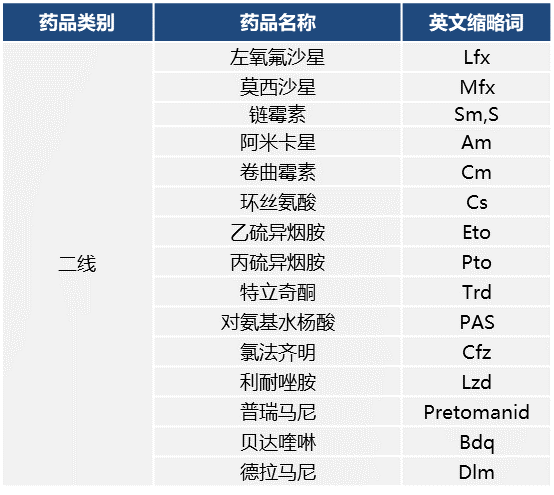
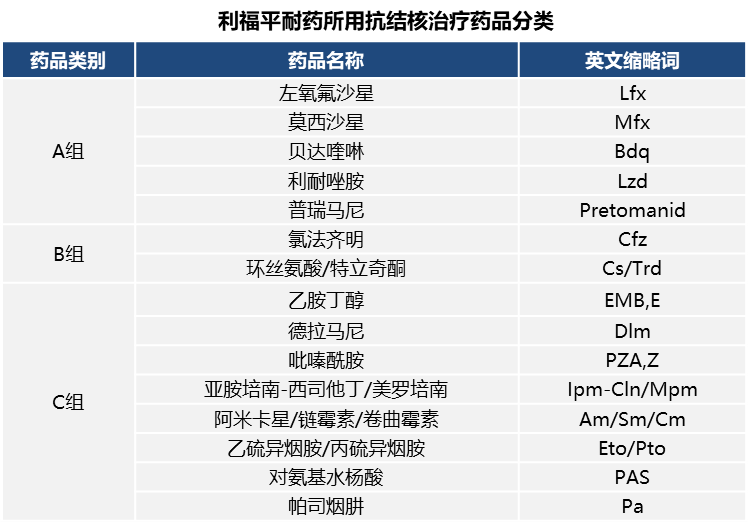
3. The application of tuberculosis detection methods and detection institutions
Tuberculosis is an infectious disease, which is strictly controlled by the state, and the amount of detection by third-party testing institutions is small. In China, tuberculosis is mainly detected by designated TB medical institutions, and the amount of detection by non designated medical institutions and third-party testing laboratories is small; Molecular testing is widely used in specialized hospitals, secondary and tertiary designated general hospitals and centers for Disease Control and prevention.
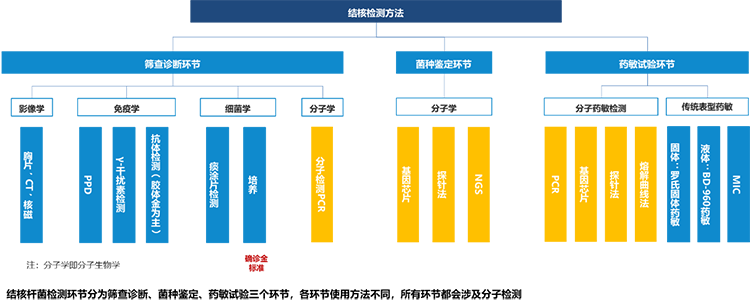
From the fixed-point and non fixed-point dimensions, the detection of combined diseases is basically as follows:
(1) Non designated institutions: it only involves the screening and diagnosis of tuberculosis, and the detection methods are different depending on the size of the hospital and the region;
a. The detection methods of small hospitals are mainly imaging and PPD;
b. In addition to conventional imaging, the detection methods of large hospitals include sputum smear, PCR and culture, and a small amount of T-SPOT and ngs.
(2) Designated institutions: screening diagnosis, strain identification and drug sensitivity test are all involved, and the above methods are adopted in each link.
4. Future development of tuberculosis testing market
The national "13th five year plan" for tuberculosis prevention and control and the "action plan for curbing tuberculosis (2019-2022)" give instructions on the active screening of people with suspected symptoms of tuberculosis and key groups, and strengthen the active screening of people with close contacts of tuberculosis, patients with AIDS and diabetes, elderly people over 65 years old and enrolled students.
At present, some regions in China have carried out the pilot work of active tuberculosis screening. For example, Henan, Hebei, Hunan, Yuxi, Shaanxi, Xi'an, Quzhou, Zhejiang, Jining, Shandong and other regions have all carried out the pilot work of active tuberculosis screening for key populations, but on the whole, it is still relatively elementary: the detection strategy of domestic tuberculosis is still mainly passive detection, and the main detection strategy is applied to AIDS patients Smear positive pulmonary tuberculosis patients and close contacts.
Tuberculosis prevention and control departments such as the center for Disease Control and prevention and the Institute for tuberculosis control have great demand for active screening of tuberculosis. Only by doing a good job of tuberculosis screening as soon as possible can we find and treat tuberculosis as soon as possible, reduce the number of tuberculosis patients from the source, reduce the infectious risk of tuberculosis and the difficulty of curing drug-resistant tuberculosis. The current situation of tuberculosis prevention and control in China shows that the competent authorities have a great demand for screening equipment for combined diseases, and the market prospect of active screening for tuberculosis is huge.
Online consultation
>Hotline
400-803-2262



